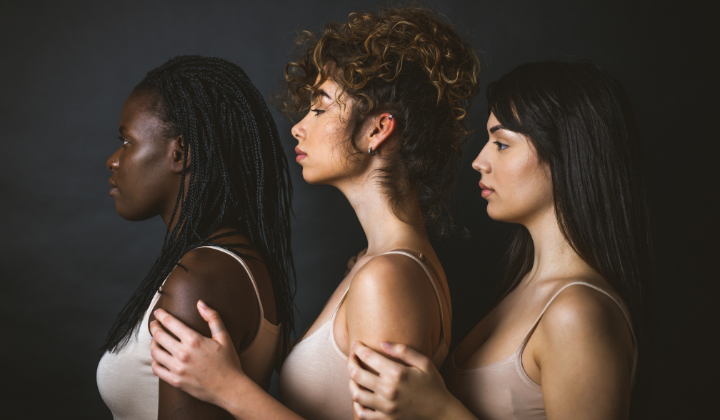
– Manuscript –
An Italian project on the social media service Instagram is aiming to bring attention to women who do not look like usual fashion models.
Carlotta Giancane started L’Imperfetta modeling agency in 2020. The name means “imperfect” in the Italian language. And the agency aims to redefine ideas about beauty in Italy.
The agency works with models who are unusual for the industry in many ways. The models are of all sizes and ages. Some of the models have disabilities. Others have medical conditions — like alopecia, which causes hair loss. Still others have scars where they have been injured or have skin discolorations.
Sonia Spartá is one of the models. The 28-year-old from Sicily has a condition called hyperpigmentation or unusual skin coloring. It results in dark spots on her face and body. She said that she often hears people talk in public about her appearance. She has heard some parents tell their children that she is from the circus. Before, she tried to hide her condition. Now, she does not. She considers her appearance beautiful.
She said, “I changed things so that my weakness, or how I perceived a weakness, became my source of strength — my distinctiveness.”
This is the first such agency in Italy. Giancane, the founder of the company, said: “I feel like a revolutionary because I realize that around me all this did not exist before L’Imperfetta.”
The agency has more than 140 models. They are in Italy and around the world. However, Giancane said she wants to change things in Italy.
Her models have appeared in advertising campaigns for cosmetic products, fashion retailers, and supermarkets. Much of the work is in online advertisements. But there have also been calls for models in television advertisements. Two models have appeared in fashion shows in Milan for designer Marco Rambaldi.
Model Lucia Della Ratta is a university student in Rome. She hid her albinism for most of her life. She tried to darken the color of her hair and skin with products. But during the pandemic lockdown, she let her natural hair color grow out and began posting photos on Instagram.
“I felt beautiful for the first time,” Della Ratta said recently. The change still brings tears to her eyes. “I felt it was my essence, as though it is me, as I really am.”
Another model, Desireé D’Angelo, has had alopecia since she was 10 years old. At school she wore a hat to hide her baldness. But classmates would often take it off her head. At age 15, a dance teacher suggested that she accept her condition and stop hiding it. Since then, she has become a successful dancer, performer, and model.
“I like my body. I like my peculiarity. In the end, I have accepted it,” she said.
Words in This Story
fashion –adj. related to the industry of selling new clothing and wearable products
circus –n. a traveling show of people who perform tricks while wearing costumes
perceive –v. to think of something in a certain way
distinctiveness –n. the state of being different because of some quality that is often rare
cosmetic –adj. something that is worn on the face or skin to make a person look better
retailer –n. a person or business that sells products to the public, not to other businesses
albinism –n. a condition in which a person’s body lacks color, so their skin and hair are nearly white, and their eyes are red
essence –n. the basic nature of something; the quality that makes something what it is
peculiarity –n. a state of being usual or quite different
*This article has been edited and reprinted from VOA Learning English with permission from Voice of America (VOA) for use in English language materials.
